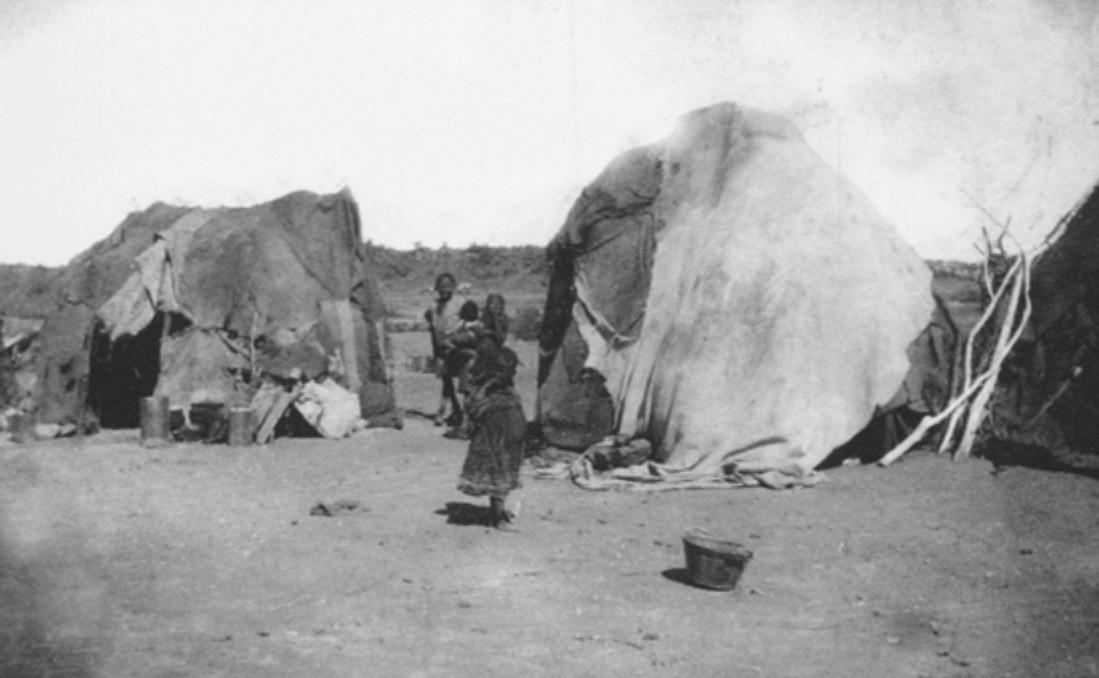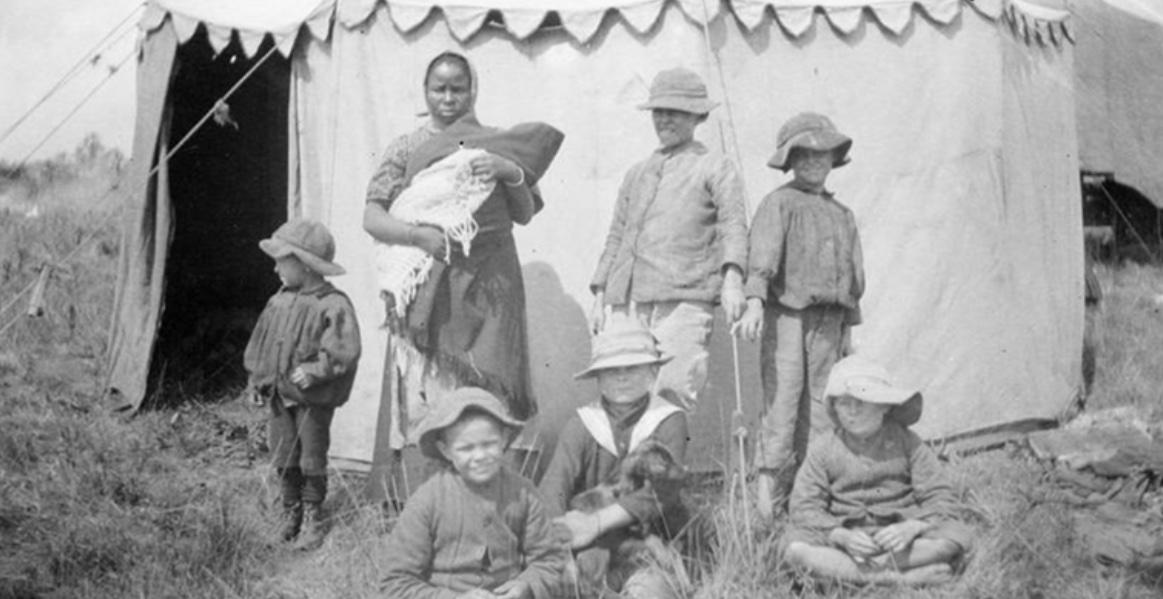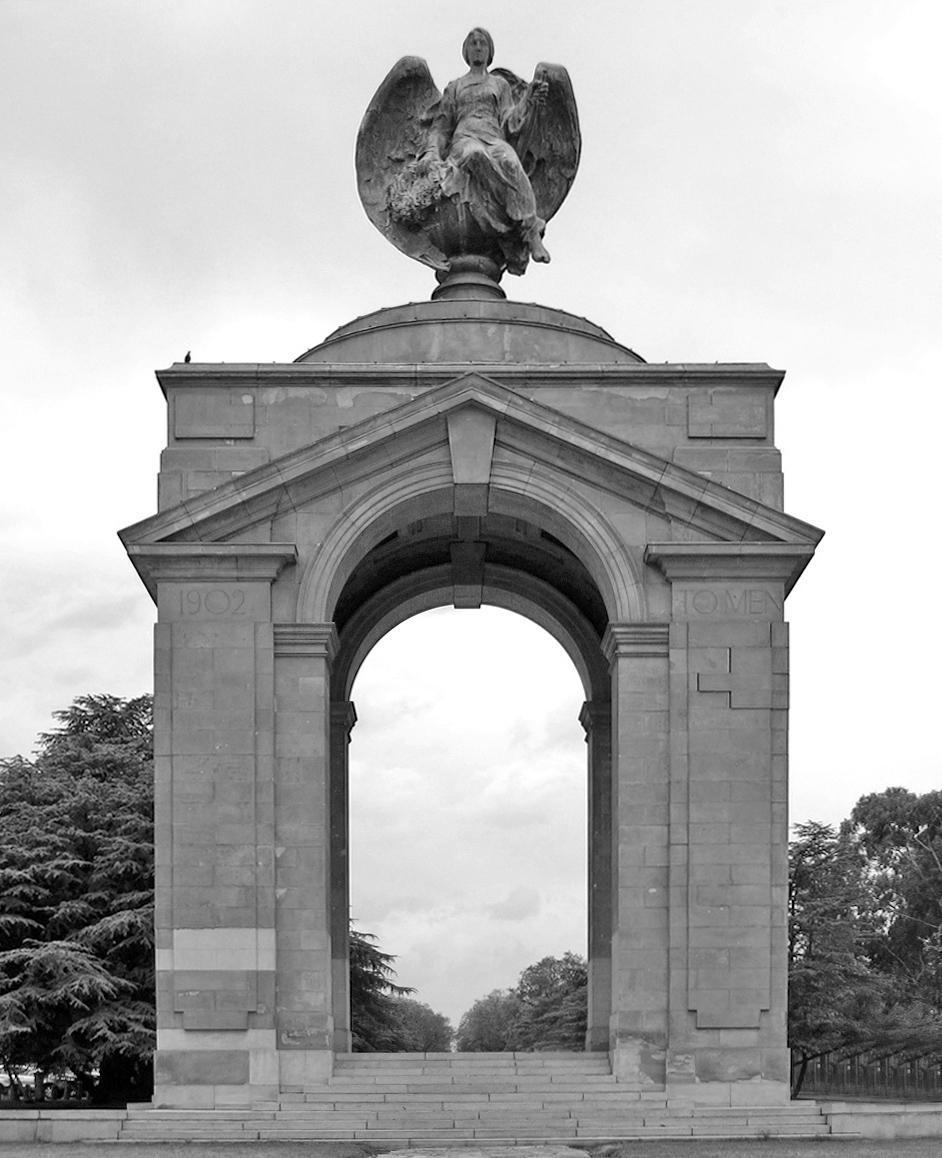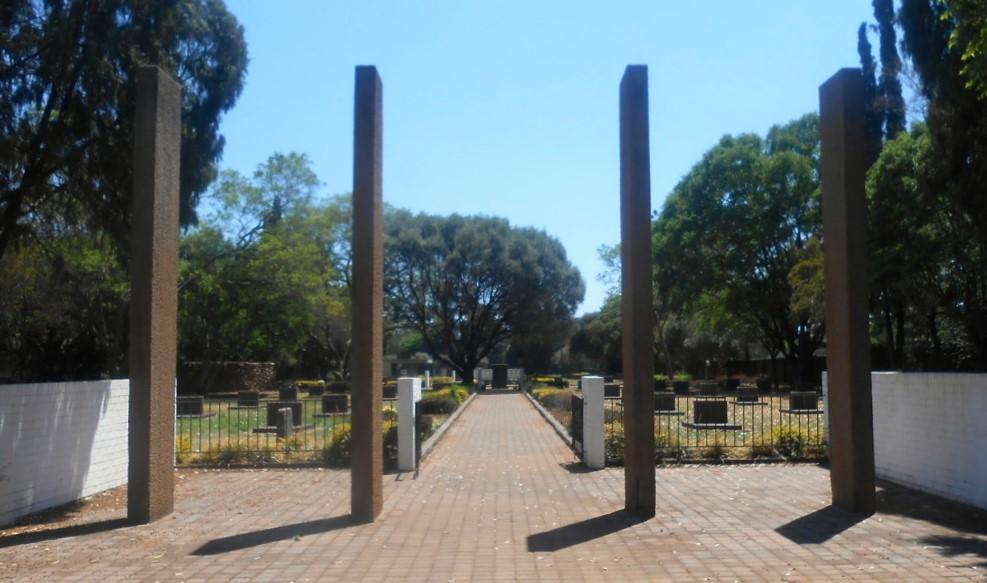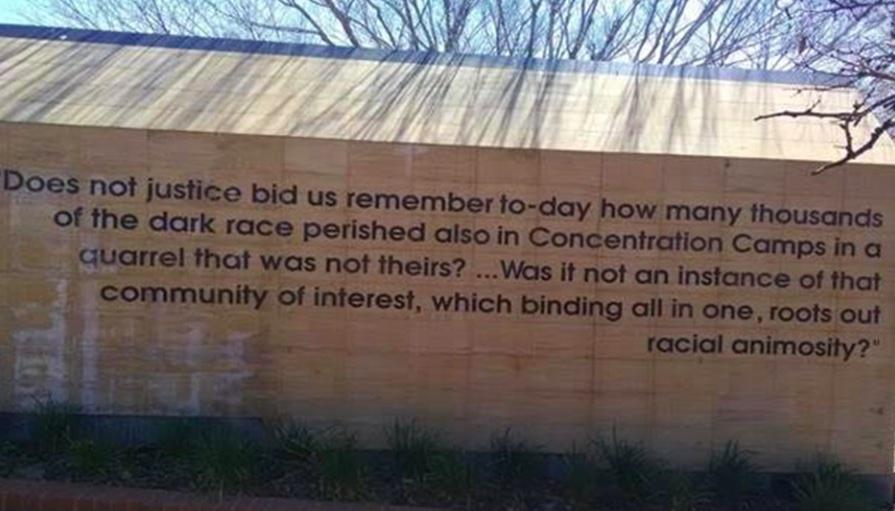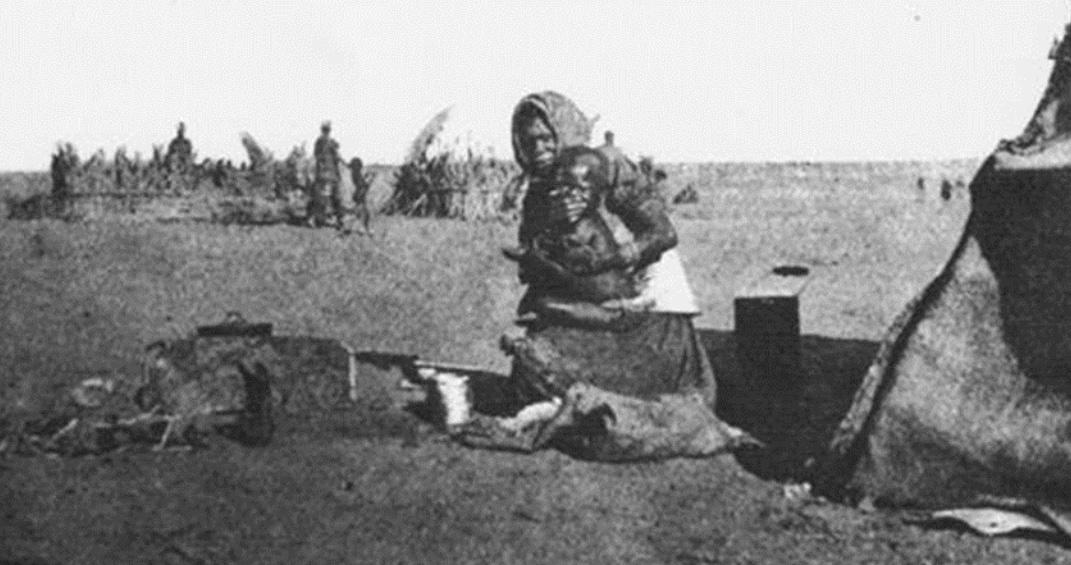
Disclaimer: Any views expressed by individuals and organisations are their own and do not in any way represent the views of The Heritage Portal. If you find any mistakes or historical inaccuracies, please contact the editor.
This article is based on a talk by Dr Mpho Manaka to the Archaeological Society on 1 June 2023. It was titled: Herstory lost in Memory: The Amnesia on the Commemoration of African Women in the South African War .
Dr Mpho Manaka, who recently completed her PhD at the University of Pretoria, presented an illustrated talk on a neglected aspect of our history, namely the experiences of African women in the concentration camps set up during the South African War of 1899-1902.
It is a difficult aspect of the war to research as, unlike the rich trove of recollections and diaries left behind by Boer women interned in these camps, Black people left no record of their camp experience other than a handful of testimonies collected by researchers at Wits University during the 1970s. The only recorded recollection by an African woman is that of the nonagenarian Emilia Mahlodi Pooe who as a young woman was interred at the Vredefort Road camp for two and a half years. For the remainder, the experiences of black women must be sympathetically inferred from those of their counterparts in the white camps.
Shelters at the Black camps (War Museum of the Boer Republics)
Nevertheless, the letters of Emily Hobhouse, and research conducted by historians, such as Dr Manaka, Elizabeth van Heyningen, Peter Warwick, Bill Nasson, Albert Grundlingh, Burridge Spies, Stowell Kessler and others, provide perspectives of life during this war and in the camps.
The South African War started off conventionally enough, with the Boer forces initially enjoying the advantages of superior numbers in the field, greater mobility, local knowledge, and interior lines. But a year later, by October 1900, the military situation had reversed. The British forces now occupied the Boer capitals and controlled the railway lines and larger towns. Still the Boers refused to surrender, and the war turned into a protracted and increasingly bitter guerilla struggle.
Certainly, the Boer leaders had underestimated the consequences to the civilian population when they embarked on the guerilla war. The so-called ‘gentlemen’s’ war soon evolved into ‘total war’, with the British increasingly viewing both white and black civilians as legitimate military targets. White and black civilians uprooted from the countryside in the Orange Free State and the South African Republic were interned in camps erected by the military.
For their part, British military commanders did not anticipate that crowding civilians into cramped, unhygienic quarters, coupled with poor sanitation and reduced-scale army rations, would result in thousands of deaths from measles, respiratory diseases, typhoid, dysentery, and other causes.
The first ‘refugee’ camps were set up by September 1900, to accommodate the families of Boer burghers who had taken the oath of neutrality. But as the guerilla war continued and the British ‘scorched earth’ policy of farm burnings intensified, Boer women and children together with their African servants were increasingly interned in camps concentrated mainly along the various railway lines. Initially, military management of the concentration camps was haphazard and poor, and the mortality rate soared especially during the harsh winter of 1901.
Emily Hobhouse, an anti-war activist who had heard rumours of farm burnings, arrived in South Africa in December 1900, with a supply of clothes and supplementary foods to distribute to needy Boer women and children. Arriving in Bloemfontein, she was shocked to discover that the scale of the removals and the level of destitution was much greater than she had believed. She visited only six camps in the OFS, and none in the ZAR, but it enabled her to see firsthand the conditions in these camps, and she spread word to contacts in Britain that conditions were not only bad but were deteriorating.
Hobhouse did not visit any of the black camps. As she explained by letter in February 1901 to Leonard Courtney, a prominent British Liberal and close associate of hers, ‘I do wish someone would come out and take up the question of the Native camps. From odd bits I hear it would seem to be much needed and I dare not spare a moment to look into the question. It is true I asked the “Loyal Ladies” here to investigate the matter, but though they said they would I could see that they were not the right kind of person to be of any use and they were quite sure beforehand that there was neither sickness, suffering or death amongst these people. I hear there is much of all three.’
Her subsequent report on concentration camp conditions, published in June 1901, raised an outcry, both in Britain and on the Continent.
A group of Boer children with a Black woman at one of the concentration camps (Imperial War Museum)
Campbell-Bannerman, leader of the Liberal opposition in the British Parliament, summed up this phase of the war on 14 June 1901, when he famously declared: ‘When is a war not a war? When it is carried on by methods of barbarism.’ Here he referred specifically to the devastation of the Boer republics and the concentration camp system.
Concerned by the death rate and the escalating public outcry, the British government established a commission of six prominent women led by leading suffragette, Millicent Garrett Fawcett, to investigate Emily’s report and to make their own recommendations. The commission visited all thirty-three white and mixed camps between August and December 1901. Its report of February 1902 confirmed Emily’s observations.
The Ladies’ Commission insisted that rations should be increased and that additional nurses be sent out immediately, among a long list of other practical measures to improve conditions in the camps. The implementation of the recommendations and the publicity garnered by the commission ensured that the death rate declined dramatically after December 1901.
But this eminent Ladies’ Commission failed to visit a single camp for Africans, even though there were more than sixty such camps in existence.
The civil authority took over the running of the camps from the military, and by February 1902 the annual death rate in the concentration camps for white inmates had dropped to 6.9 percent. It eventually fell to 2 percent. By then, some 28 000 Boer internees, of whom 24 000 were children under the age of 16, had died in the camps.
It is also estimated, although accurate records are lacking, that about 14 000 Africans perished in the camps, 12 percent of the 107,000 black Africans who were interned.
In her talk Dr Manaka highlighted two important general points that are often overlooked in commemorations of wars. First, that war is always about much more than soldiers and fighting. Civilians are also heavily involved: as workers, internees, sufferers of loss, and as victims of often violent assaults on the part of soldiers.
Second, that commemoration of events from the past is based on power – the power to decide what to commemorate, and how. In South Africa, with its history of colonialism and an exploitative patriarchy, this has very much meant the power of white males.
In the case of the South African War, commemorations have focussed strongly on the military side, with numerous monuments having been put up at battle sites and cemeteries.
Rand Regiments Memorial / South African War Memorial (Lutyens Trust)
As far as civilian experiences have been commemorated, the focus has been mainly on the suffering of Boer women and children displaced from the countryside by British scorched-earth tactics and interned in concentration camps. The experiences of uprooted Africans, especially of women and children in the camps, has been relatively neglected by historians, though some recent studies have aimed to correct this.
Memorial at Irene Concentration Camp (The Heritage Portal)
Dr Manaka briefly lifted the veil on sexual violence inflicted on civilians during the war. Some depositions were, in fact, made before Boer officials, and form part of the NC Havenga Collection in the Free State Archives. These records were regarded as so sensitive that they were embargoed for a further forty years in 1948, and even when this period expired, access to them remained restricted. Although these depositions relate to rape and sexual violence inflicted on Boer women, African women would no doubt have experienced similar acts of brutality.
In this context Dr Manaka also referred to the historical drama series Feast of the Uninvited, which explored new ground through the narration of two women, one White and the other African, who were both raped in the concentration camps.
Since the establishment of constitutional democracy in South Africa in the 1990s, public interest in the experiences of Black women in the war of 1899-1902 has continued to be minimal. On the one hand, Dr Manaka told us, there is little interest in the war among Black people, who see it as having been a ‘white man’s war’ and can’t relate to it. And on the other hand, successive governments have been largely unconcerned to commemorate anything except the liberation struggle.
Wall panel at the Garden of Remembrance with a quotation by Emily Hobhouse that was omitted during the speech that was delivered at the unveiling of the Vrouemonument in 1913. (Dr Mpho Manaka)
For their part, historical archaeologists have not taken up research into the experiences of Black people in the concentration camps. The guild of professional archaeologists has so far directed its attention to other topics.
Main image: A rare image of conditions and starvation in the Black camps, not explicitly displayed to indicate the fatalities. An example of the downplaying of Black African’s sufferings at the camps (War Museum of the Boer Republics)
Dr Mpho Manaka is a lecturer in Archaeology at the University of South Africa and founder of the Pretoria Archaeology Club for Schools. Trained as an archaeologist from the University of Pretoria, Dr Manaka has spent the last few years studying and pursuing a career in historical archaeology. Her main focus is on conflict and how war events of the past continue to shape current politics.
SJ de Klerk is a retired human resources practitioner. Since retirement he has been writing articles on various aspects of South African history for The Heritage Portal. He is Chair of the Northern Branch of the Archaeological Society.
Emeritus Professor John Wright lectured in history at the University of Natal/KwaZulu-Natal in Pietermaritzburg. He is currently a research associate in the Archive and Public Culture Research Initiative in the Department of History at the University of Cape Town.
Further Reading
- Comaroff JL (ed.). The Boer War Diary of Sol J. Plaatje. London: Cardinal, 1976.
- Hobhouse Balme J (compiler). To Love One’s Enemies: The Work and Life of Emily Hobhouse. Cobble Hill, BC, Canada: The Hobhouse Trust, 1994.
- Nasson B & Grundlingh A (eds). The War at Home: Women and families in the Anglo-Boer War. Cape Town: Tafelberg, 2013.
- Packenham T. The Boer War (Illustrated Edition). Johannesburg: Jonathan Ball, 1993.
- Spies SB. Methods of Barbarism: Roberts, Kitchener and Civilians in the Boer Republics: January 1900 – May 1902. Johannesburg; Jonathan Ball, 2001.
- Van Heyningen E. Concentration Camps of the Anglo Boer War: A Social History. Johannesburg: Jacana, 2013.
- Warwick P. Black People and the South African War 1899-1902. Johannesburg: Ravan, 1983.
Comments will load below. If for any reason none appear click here for some troubleshooting tips. If you would like to post a comment and need instructions click here.

